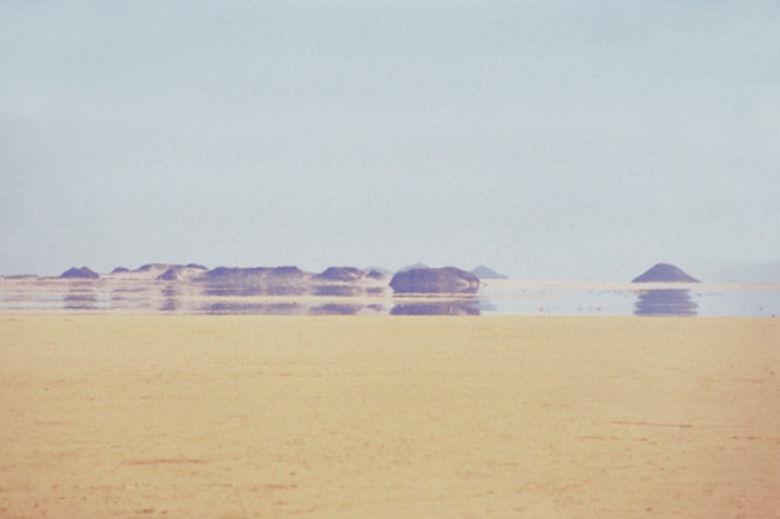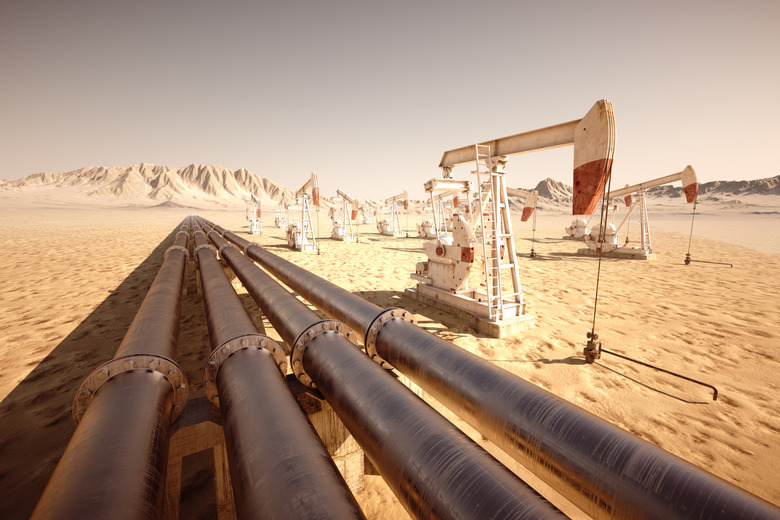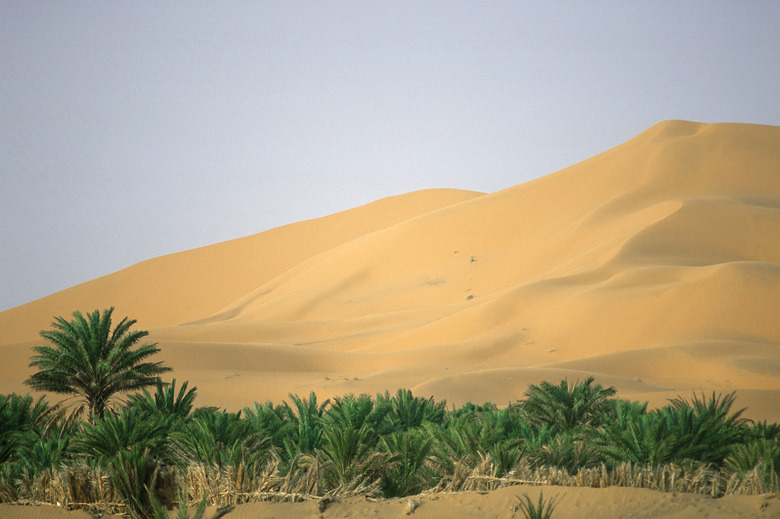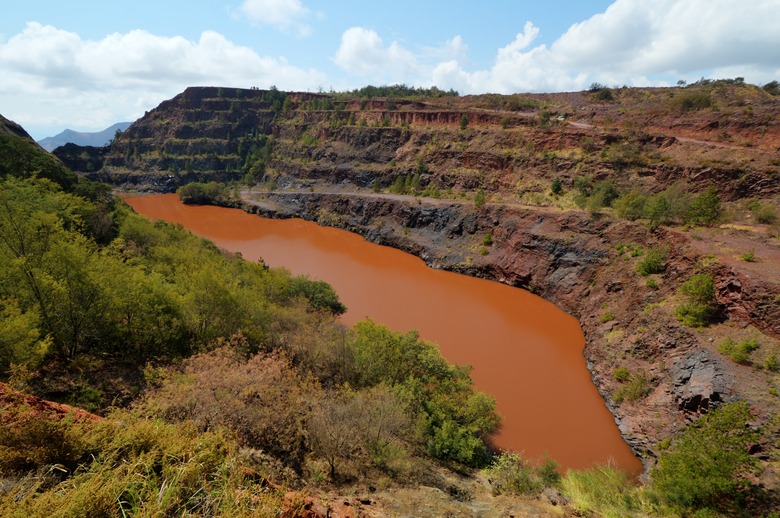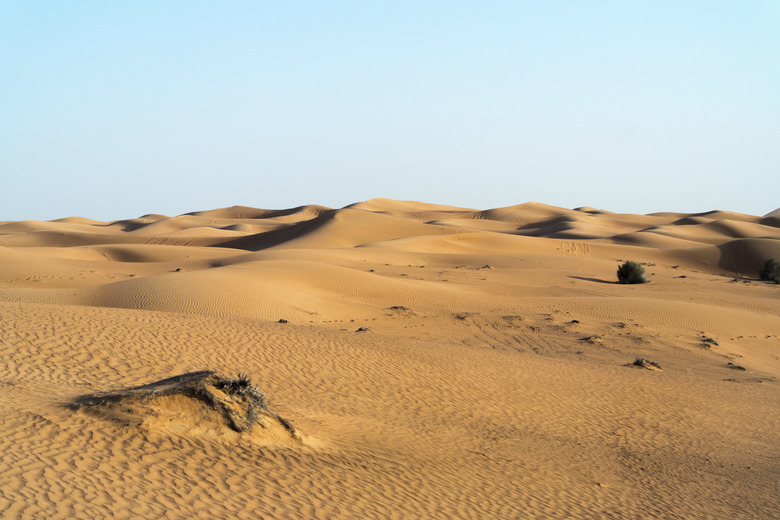Natural Resources Of The Sahara Desert
The largest desert in the world, the Sahara is a huge, natural resource-rich area of northern Africa. Covering a massive part of the continent and encompassing the recognized legal borders of many countries, the Sahara Desert stretches from the Atlantic Ocean in the west to the Red Sea in the east and stretches south from the Mediterranean Sea. The desert covers about 3.5 million square miles. The word "sahara" is from the Arabic word "sahra," which means "desert."
Oil, Natural Gas and Minerals
Oil, Natural Gas and Minerals
An enormous wealth of natural resources is hidden beneath the Sahara Desert. Principal among these riches are huge amounts of oil and natural gas, particularly in territory belonging to Algeria and Libya. Algeria and Mauritania have large reserves of iron ore, and large quantities of phosphates are in Morocco.
Water
Water
The Sahara's other and absolutely vital natural resource is water. While water may seem like a contradiction for a desert, the Sahara's water allows the desert to remain the home of nomadic tribes and fauna. A number of oases — places where water from underground reaches the surface — are on what once were caravan routes and today are much more modern roads. They are a lifeline for desert dwellers.
Natural Resources Development
Natural Resources Development
Commercial development of the Sahara Desert's natural resources accelerated substantially after the end of World War II and the decline of colonial dominion. The Sahara covers parts of many nations besides the previously mentioned Algeria, Libya, Mauritania and Morocco, including Tunisia, Egypt, Mali, Niger, Chad and Sudan. Most benefit from the proceeds of their natural resources in the Sahara. In particular, Libya and Algeria capitalize on oil and gas, while Morocco, Mauritania and Western Sahara developed mines.
Evolution
Evolution
The Sahara Desert was not always the same as it is now. Millions of years ago, rivers crisscrossed the area, and it was a fertile region of lakes and water. Modern techniques such as satellite imaging identified long-since vanished rivers from about 2 million years ago, and modern mapping and measuring methods show that the desert varies in size from year to year according to the amount of rainfall in the region.
Cite This Article
MLA
Laing, Martin. "Natural Resources Of The Sahara Desert" sciencing.com, https://www.sciencing.com/natural-resources-sahara-desert-8270502/. 22 November 2019.
APA
Laing, Martin. (2019, November 22). Natural Resources Of The Sahara Desert. sciencing.com. Retrieved from https://www.sciencing.com/natural-resources-sahara-desert-8270502/
Chicago
Laing, Martin. Natural Resources Of The Sahara Desert last modified March 24, 2022. https://www.sciencing.com/natural-resources-sahara-desert-8270502/
